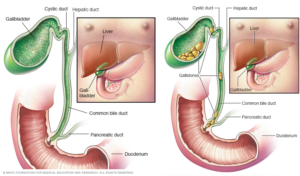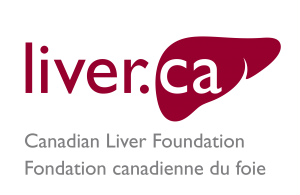Gallstones
Gallstones
Gallstones are solid lumps of cholesterol crystals or pigment material that form in the gallbladder.
The Gallbladder
The gallbladder is a pouch that sits beneath the liver and stores bile, which is a greeny-yellow fluid produced by the liver. With a meal, the gallbladder releases bile into the small intestine where it helps to digest fats.
How are gallstones formed?
Some fatty components (such as cholesterol) are not easily dissolved in bile. When there is too much of these components in bile, they precipitate and form solid crystals. These clump together forming gallstones – also known as cholelithiasis.
Are all gallstones the same?

No. There are different types of gallstones, depending on which component of the bile has solidified. Also, the stones can vary in size ranging from tiny, sand-like particles less than one millimetre in diameter to more than four centimetres in diameter.
Almost 90 percent of gallstones are composed of cholesterol; the remainder consist of pigment material (bilirubin). The reason for the formation of pigment stones is not yet fully understood; however, some people with chronic liver disease (e.g., cirrhosis) or red blood cell destruction, such as hemolysis (eg. sickle cell anemia) are at risk for developing pigment stones.
Who is at risk of developing gallstones?
- Gallstones occur in up to 20 percent of Canadian women and 10 per cent of men by the age of 60.
- Women between the ages of 20 and 60 are three times more likely to develop gallstones than men and women who have had multiple pregnancies are also more likely to develop gallstones.
- The prevalence of gallstones increases with age and with obesity.
- The incidence of gallstones is higher in certain racial groups. For example, in Canada 70-80 percent of the First Nations population is affected with this disease.
Symptoms
Patients with symptomatic gallstones experience severe abdominal pain and may suffer further complications such as jaundice (yellowing of the skin and eyes) and inflammation of the gallbladder, bile ducts, liver or pancreas. However, about 80 percent of people who have gallstones have no symptoms. These people are said to have so-called “silent” gallstones with no associated pain. Gas and indigestion are not specific symptoms of gallbladder or gallstone disease.
Diagnosis
Gallstones are usually diagnosed by ultrasound. Other procedures, such as x-rays, may also be used. Often silent gallstones are detected incidentally during the investigation of another problem.
Treatment
Silent gallstones do not require treatment. Several gallstone therapies are available to people with symptomatic gallstones. There are two surgical methods to remove the gallbladder and its gallstones under general anesthesia:
- Open cholecystectomy is the classic surgical treatment for gallstones which requires an abdominal incision. The patient remains in the hospital for five to seven days to recover.
- Laparoscopic cholecystectomy was introduced in 1990. Surgeons remove the gallbladder through small abdominal incisions using a lighted tube (called a laparoscope). The surgeon views the entire procedure on a television monitor. Because there is no cutting through the muscle of the abdominal wall, the recuperation period is much shorter.
Medical therapy can get rid of the gallstones, leaving the gallbladder intact: cholesterol gallstones can be dissolved using a medication, ursodeoxycholic acid taken by mouth, avoiding surgery. It is therefore suitable for patients for whom surgery may be risky. The rate of success is variable (40-80 percent) and treatment usually requires at least six to twelve months. There is a risk of recurrence; about half will have recurrent stones after 5 years. The best candidates are those with very small gallstones and those who have mild symptoms.
Prevention
Because obesity is a risk factor, people should aim to maintain an ideal body weight. Otherwise there is no specific diet for gallstone disease. Very obese individuals who are attempting drastic weight reduction are at risk for developing gallstones. They should lose weight under medical supervision.
Support
National Help Line:
This support resource gives you and your loved one somewhere to turn for answers after diagnosis, helps you understand your disease, and provides you with the resources you need. You can call 1 (800) 563-5483 Monday to Friday from 9 AM to 5 PM EST.
The Peer Support Network:
This is a national network of people living with liver disease that have offered to share their experiences with others. It was developed by the Canadian Liver Foundation as a means to link Canadians like you who have a family member who has liver disease, who care for someone who suffers from liver disease, or who have been diagnosed with a liver disease, to talk about your concerns with a peer in a similar situation.
If you would like to be connected with a Peer Supporter in your area, or would like to join the Peer Support Network, please fill out the Peer Support Network Sign-up Form.
Help us help you!
If you are not satisfied with the information you just read or any information on our website, please take a moment to send us your comments and suggestions on the type of content you would like to find on liver.ca. Please include the page you are commenting about in the subject line of your email.



